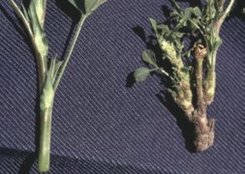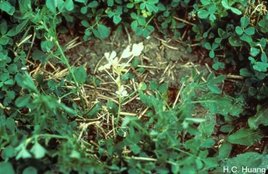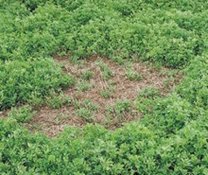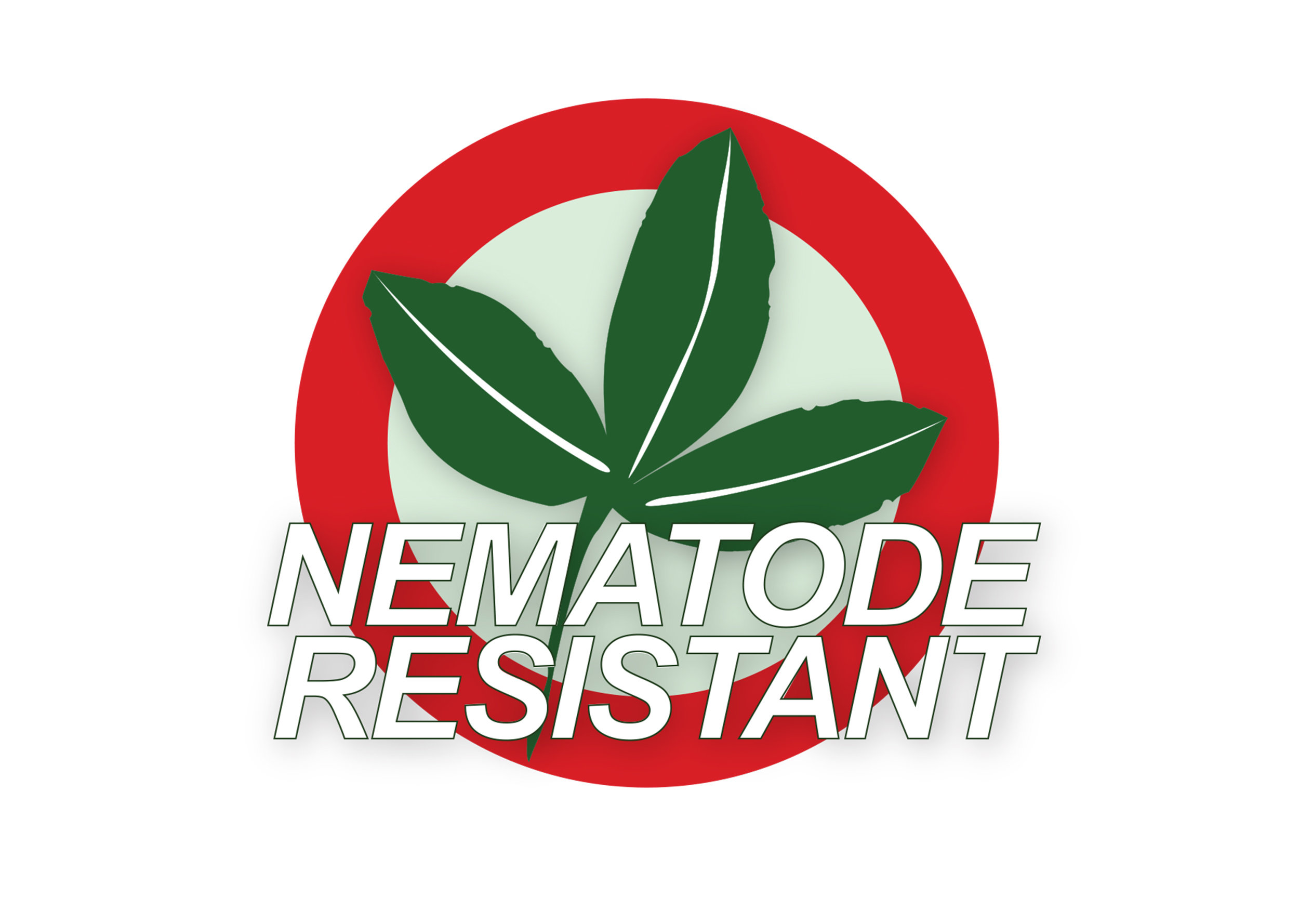Meloidogyne hapla (and Meloidogyne chitwoodi to less extend) can live as parasites in the root tissue of lucerne. They develop small oval galls and excessive branching occurs on the roots. The galls may look like nitrogen fixing nodules, but can be distinguished as healthy nodules are usually pink coloured.
Heavy infection with root-knot nematodes can lead to stunted growth. Moreover, infected plants are more vulnerable to disease infections.
As nematodes can come along with seeds, the best way of prevention is to use clean, nematode-free seeds. The best way to control root-knot nematodes is to use resistant varieties. Highly resistant varieties show almost no susceptibility. On crop rotation it is recommended to rotate with cereals if known there are root-knot nematodes in the field. As many weeds are host to Meloidogyne hapla, weed control is an important aspect too.








